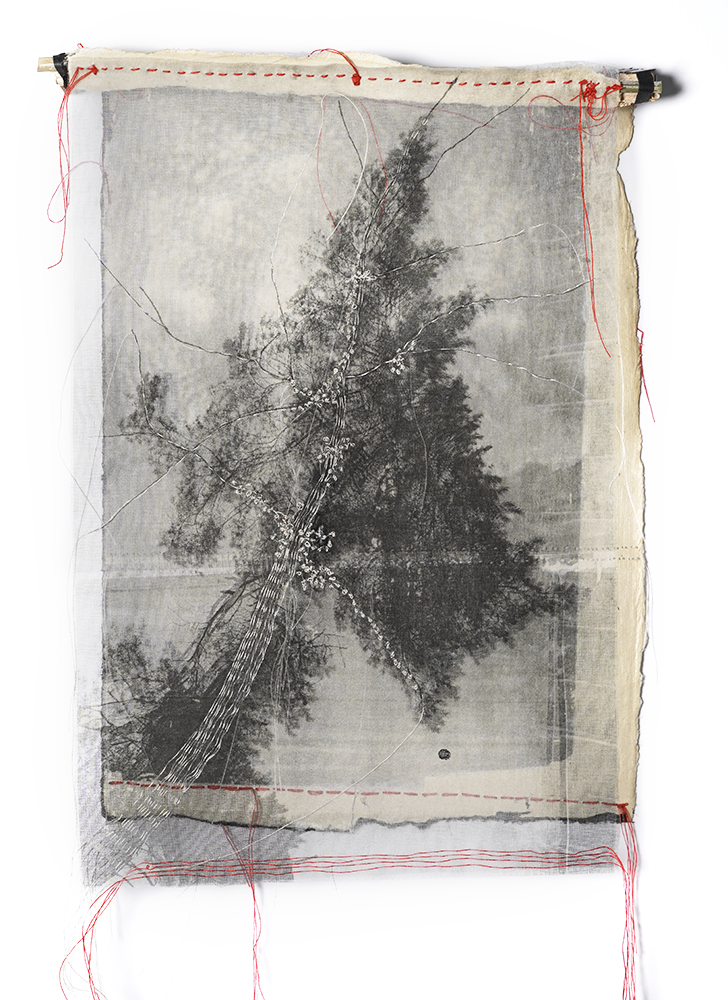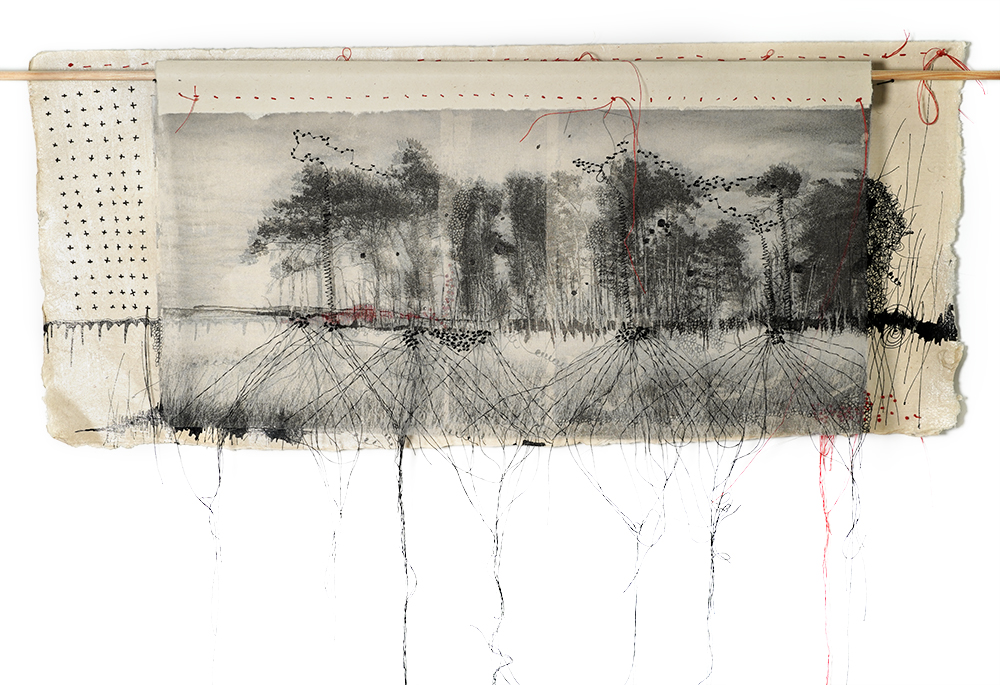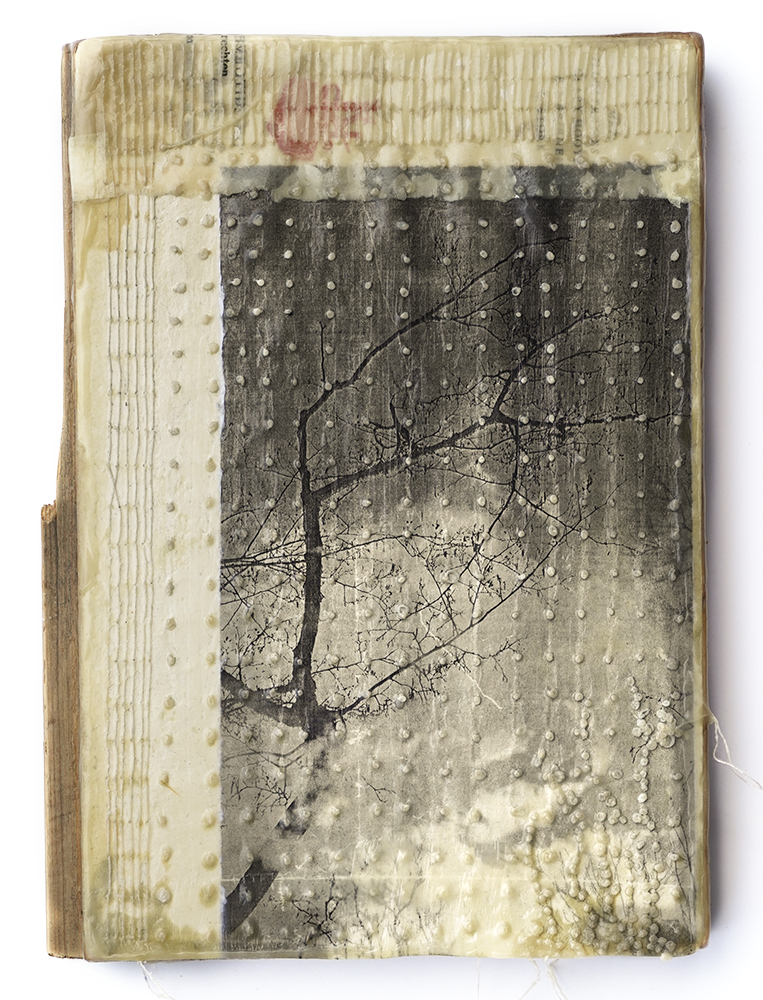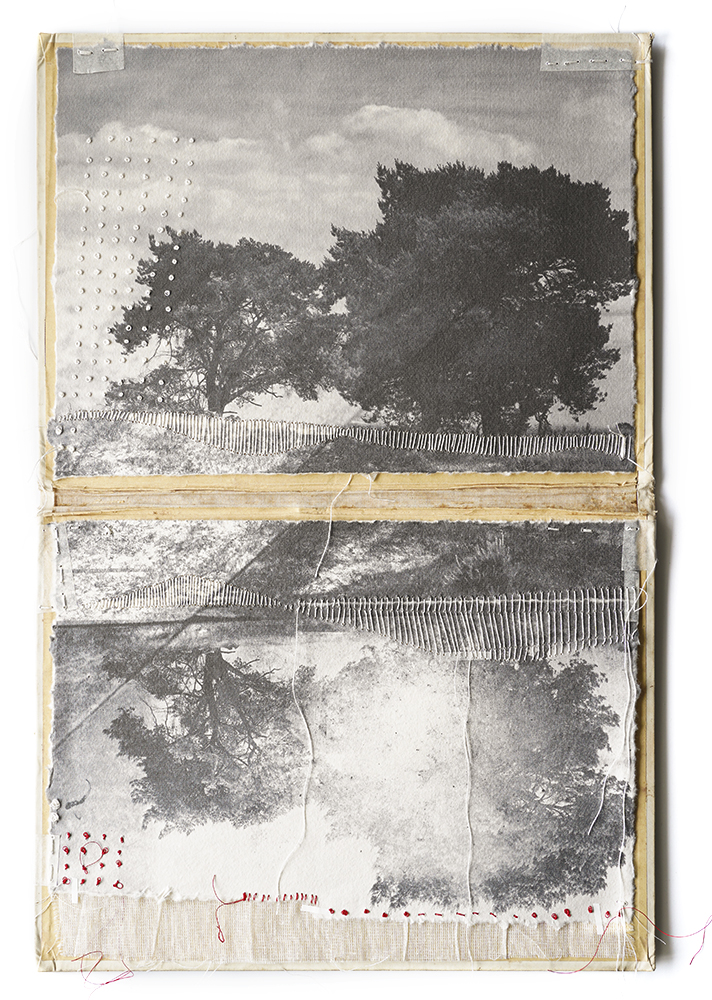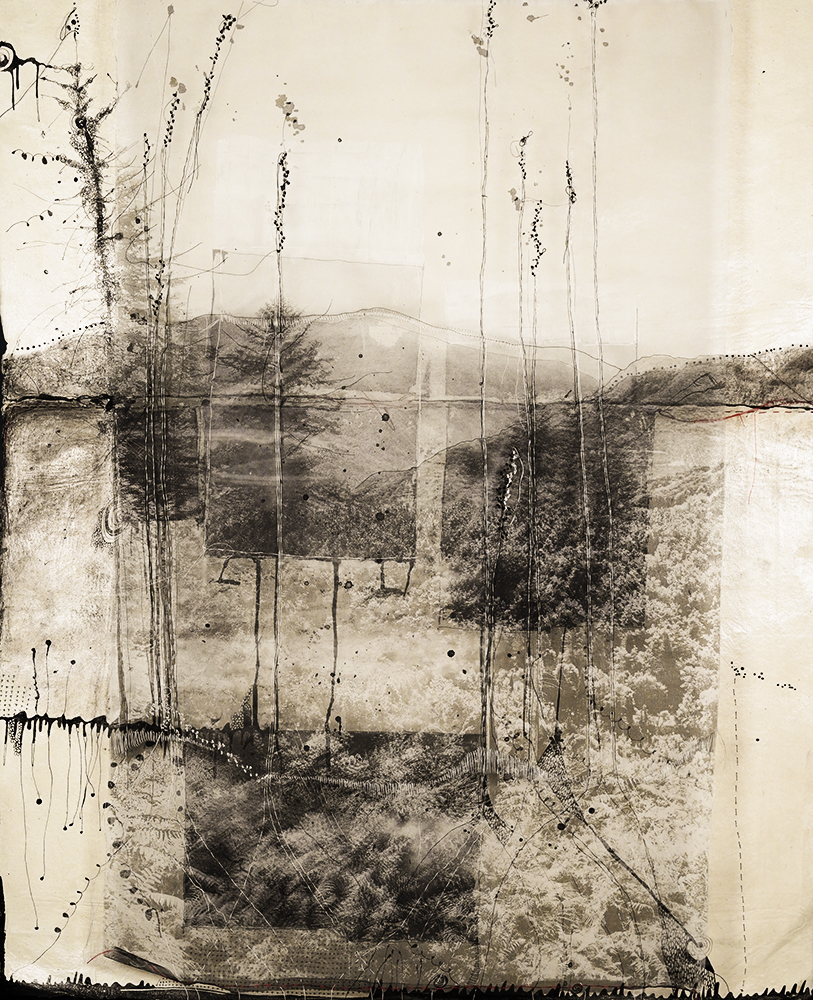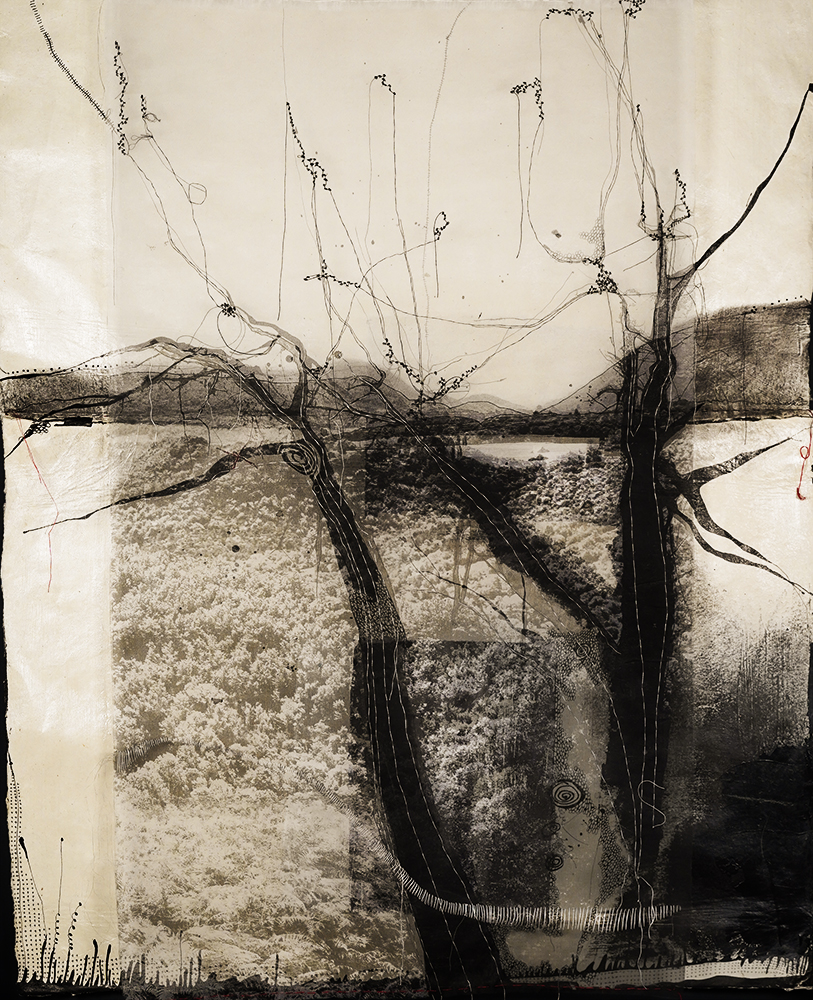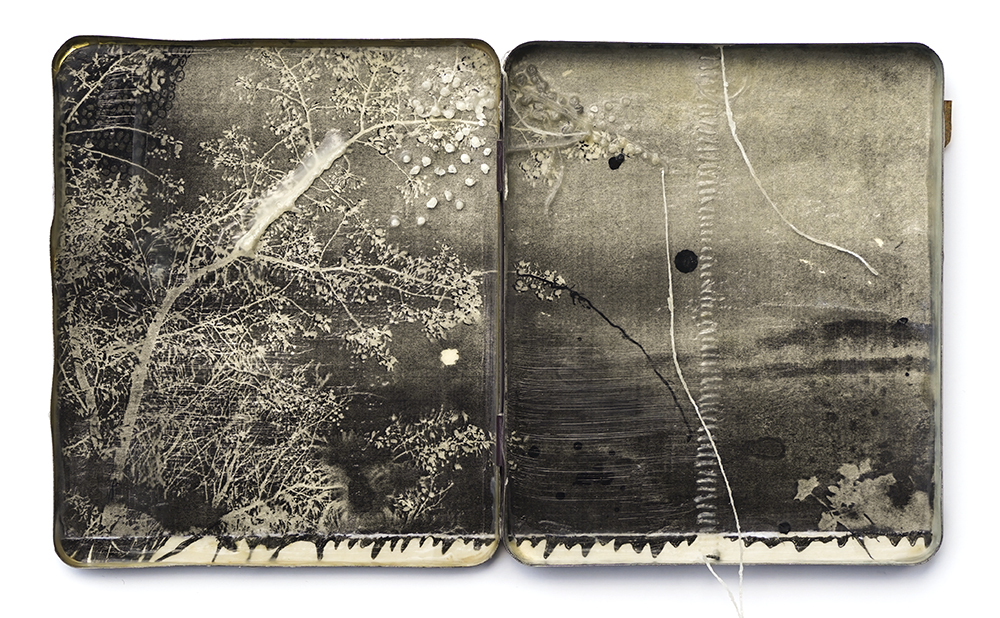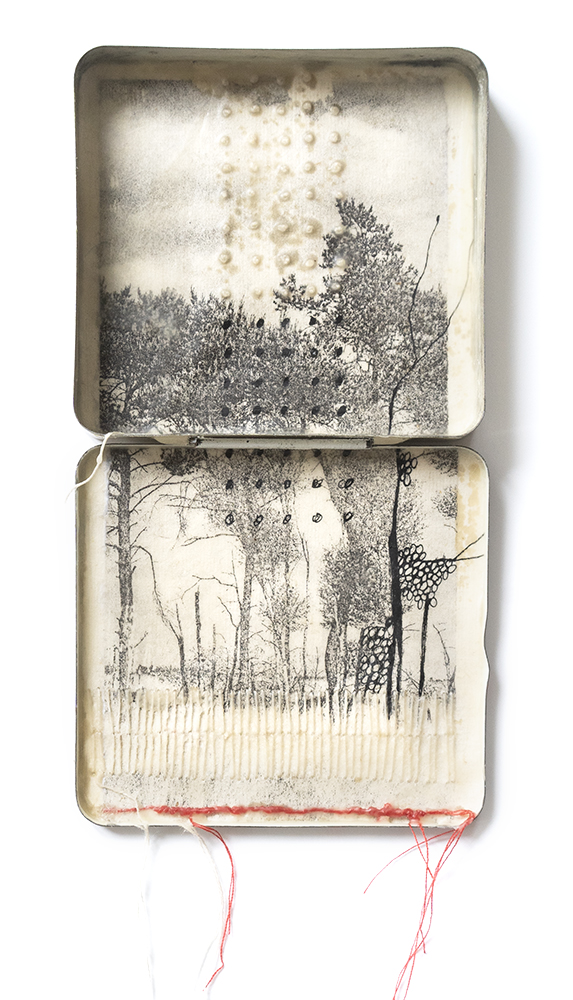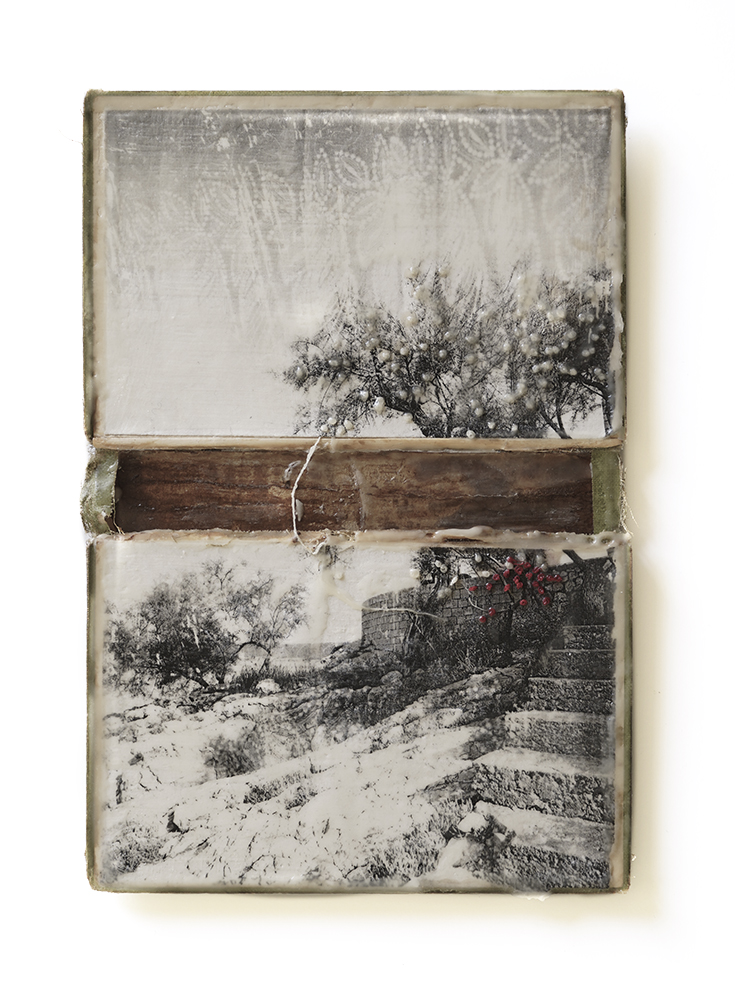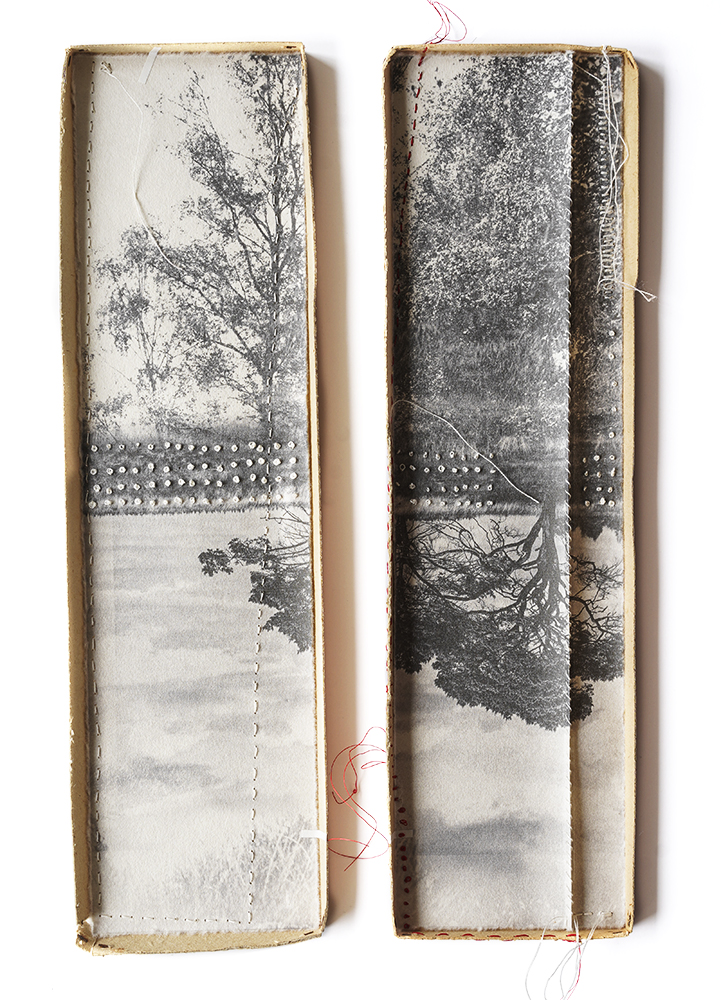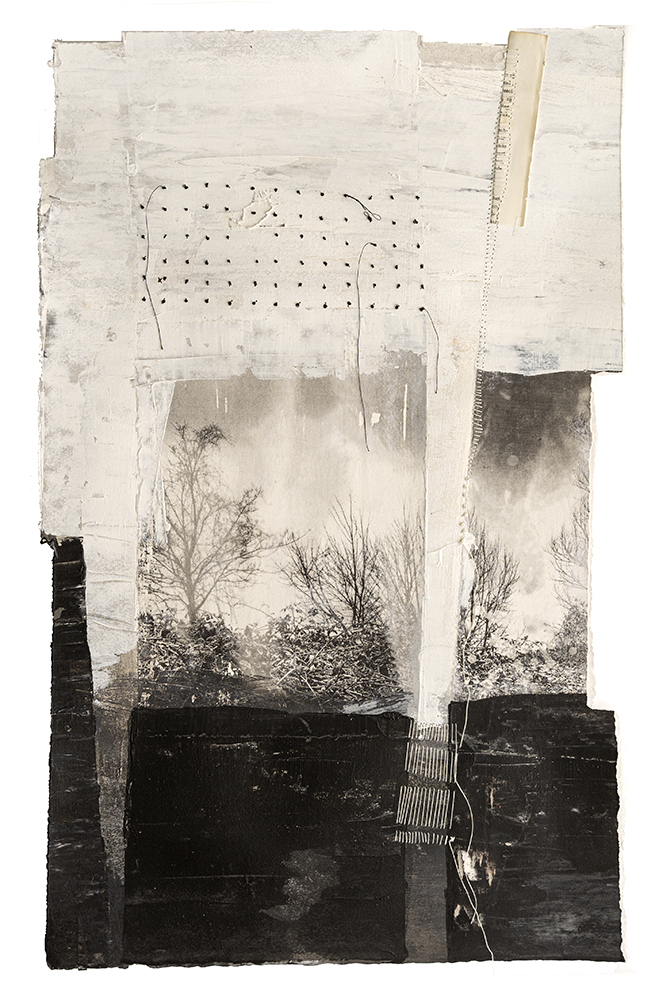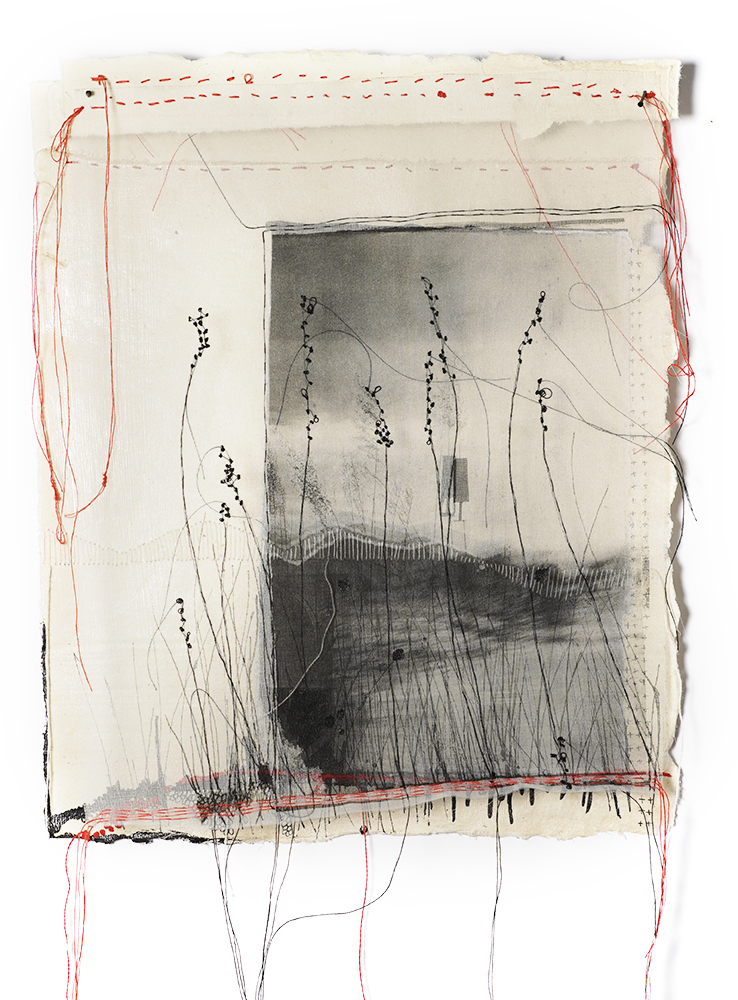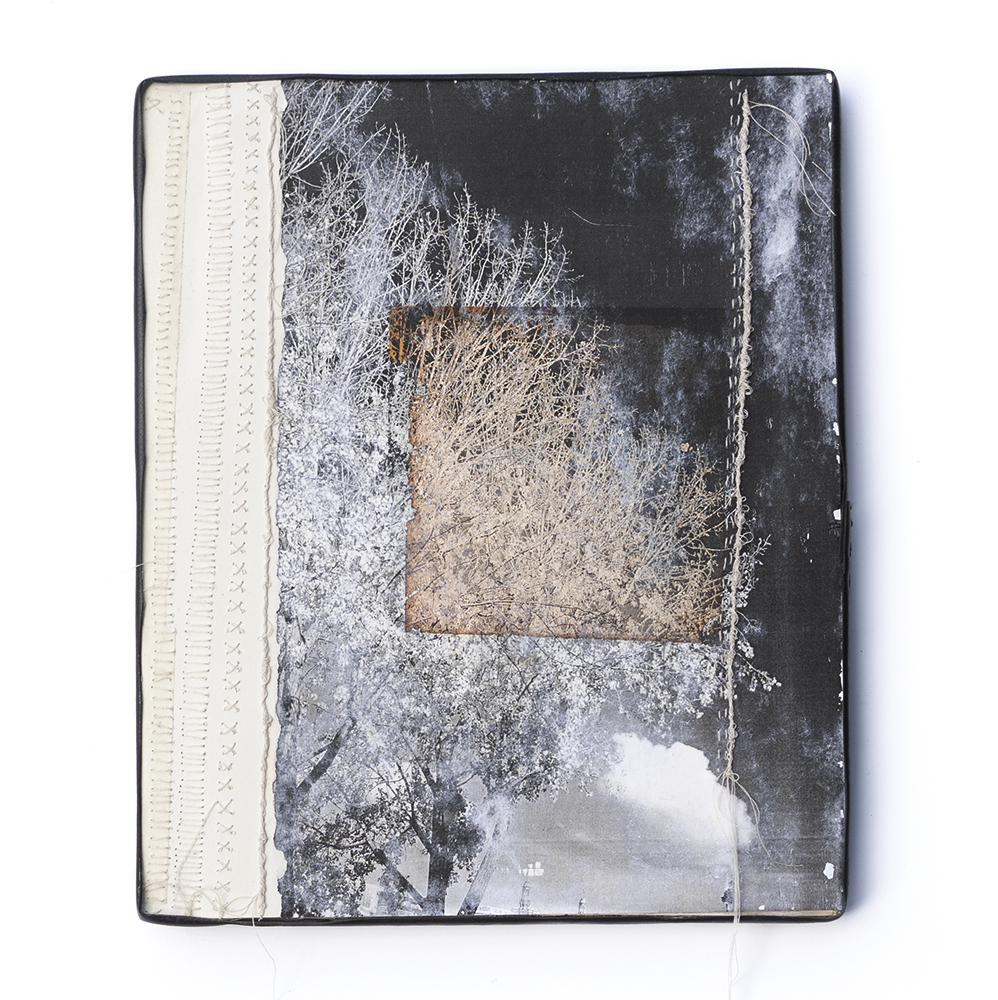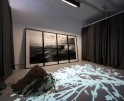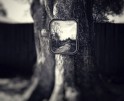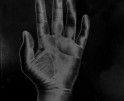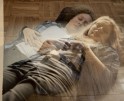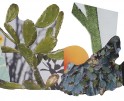Jackie Mulder: Thought Trails
When most observers think of photography and what it means to work in a photographic medium, they imagine a flat two dimensional print in a frame. Photography however, aims to be seen as much more than a piece of paper. Each photograph has a meaning, a purpose. When a piece pushes the bounds of photography, there is an intimacy that occurs between the artist and the work. Not only is the piece a reflection of what the artist strives to create, but also becomes an extension of the artist’s thoughts and emotions.
Jackie Mulder breaks away from the typical mold of a photograph by intertwining mixed media into her pieces. Allowing the work and her imagination to lead her, Mulder’s project Thought Trails, becomes a process of exploration into the mind. Using a myriad of materials, Mulder creates stunning images that physically and emotionally grasp viewers and take them into a world of healing through both real and imagined spaces.
At a young age Jackie Mulder already broke free from the ‘how it should be’ pattern. The rebellion that was necessary for this is still a common thread in her work. After a career as a fashion designer and graphic designer, she chose a new branch of design; in 2021 she graduated from the Photo Academy in Amsterdam. Her autonomous work has been selected for Gup New Photography 2021, included in the Fresh Eyes Photo 2020. She was one of the finalists for the Gomma Photography Grant 2020 as well as in 2021. She was one of the three finalists of the Fotofestival Naarden Talent Award. Her work is published in different international art magazines. In 2022 her work was on view at the 2 last editions of BigART and at KunstRAI Amsterdam. She took part in many group exhibitions and she was initiator of the pop-up ‘Gallery & Bookstore for Contemporary Photography’ in Amsterdam. From November 2022 till February 2023 she had a solo exhibition at Cultuurcentrum Hasselt in Belgium.
Follow Jackie Mulder on Instagram: @jackiemulder
Thought Trails
My work is about how the brain works when we let our minds wander. The mind randomly switches between past and present, jumping back and forth between blurry and razor-sharp, making fascinating connections. The brain blocks certain memories and fills in the blanks with the power of the imagination. That allows us to manipulate the world around us as we see it. Deconstructing and reconnecting my images by stitching and pasting creates a new, layered reality. I use the irregularity of the wire to draw with it like a pencil meandering across the image. I let the thread connect and separate as an abstraction for a life of memories, searching and thinking. I use different techniques such as charcoal, stitching, beeswax, parts from old books, ink and paint to hide and accentuate. All my works are unique pieces and are characterized by their tactility. In a contemplative process created by repetitive handicrafts, I create my own world, calm my mind and repair what is damaged. My work is literally and figuratively ‘healing’. -Jackie Mulder
Kassandra Eller: How did your photographic journey begin? What made you decide to go back to school for photography?
Jackie Mulder: As a designer I was always dealing with photography but I worked with the images that were always made by others. I have always had an interest in photography and at some point I bought a good camera and started to study the technical and creative possibilities. I immediately fell in love with the medium and I started the 4-year course at the ‘Fotocademie’ in Amsterdam. One of the best decisions of my life.
KE: Your bio states that you were previously a fashion designer and graphic designer. Do your previous careers play a part in your photographic practice?
JM: I think that photography is also a kind of ‘design’. It is a way of shaping an image, a way of conveying something to the viewer. Working with image and form is what I have always done in my career as a fashion designer and after that as a graphic designer. So the transition to photography was a logical step for me that offers me many additional opportunities to express myself. Photography was an inspiring way for me to shape the image itself. The great thing is that as a fashion and graphic designer I always worked for clients and therefore had to put myself in the shoes of the target group. And now that I am working as an independent visual artist, I can steer my own course and I no longer have to take into account what others want. I am completely free.
KE: Your work is incredibly beautiful and creates a feeling of intimacy between the viewer and the art. How do you choose which imagery to utilize in your photography? Do the images in the photographs have a deeper meaning to you?
JM: The photos I use are made by myself and I impulsively choose which image to use and which images to combine with each other. I make different choices every time. That happens impulsively. I keep making different choices, but it is true that the photos I take and choose and combine are very close to myself. I keep going with the image until I think it’s right, until a spark jumps over. Not only the photos have a meaning for me, also I use materials like old boxes, book covers and pieces of wood because I think these materials radiate history. Which I find more interesting than a photo in a ready-made frame. For example, I use old metal boxes of the cigars my late father smoked. Or I use the book covers from my childhood as a background. I regularly search in waste containers at 19th century buildings that are being renovated. I often find beautiful old planks there that I use to print my photography on. The history of these materials fascinates me.
KE: The idea of destruction and reconstruction is quite intriguing. I myself have dabbled with this idea in my own work. When destroying your work and then reconstructing it do you have a composition in mind beforehand or do you let the composition develop naturally?
JM: I never have a plan in advance of what the work should eventually look like. That’s what makes it so exciting for me. The process to the end result is always a journey of discovery for me. I find it intriguing that sometimes things arise under my hands that I could not have imagined beforehand. I like to surprise myself.
KE: You mention the idea of memory and the process of healing in your statement through the process of using these different materials. Do the different materials signify something different in each work?
JM: All the materials I use suit me. The pointed sharpness of the pen and ink drawings, the deep black raw effect of acrylic paint, the softness of charcoal, the tarnished appearance of handmade paper, the fragility and transparency of the silk fabric, the sloppy yet regular stitches of the embroidery. The greater or lesser transparency of beeswax. The incredibly time consuming of the small repetitive actions, something I can keep up for hours on end, suits me very much. The healing part lies in the fact that during this work I can let my thoughts flow, be absorbed in my own world. Something I did as a child.
KE: To conclude, what is next step in your photographic journey? Is there anything you are currently working on?
JM: My dream project is an installation, that consists of different works spanning from very large to very small, that I can present in a large space with a high ceiling, where I can immerse the audience in my world. The installation would even include soundscape, movement and film. The installation would be like a path through a forest. You walk in, you don’t know where you will end up, but with every few steps you experience new sensations. In which one can wonder and let the thoughts flow. Just like I do while making my work.
I also am planning to publishing a book about my work before the end of this year. It however is quite an interesting challenge to express the tactility and layering of my work in this book.
KE: Is there anything further that you would like to add?
JM: I was born in a family with a dominant father, who maintained a repressive and religious environment. From a young age I wanted to escape this environment. During my puberty I retreated to my room to endlessly scribble small drawings on paper, which resulted in multiple three meter long artworks. By doing this I created a save world for myself. When I turned seventeen I ‘escaped’ and went to live on my own. Finally I felt free. The tightness of my youth and the eagerness to find my own way formed a central theme (We call this a “red thread” in Dutch) in my live. This “red thread” forms the basis of the art I make. I still feel the urge to do thing differently than is expected. In my photography I do this by altering my flat, two dimensional photos into images with multiple layers. I am not interested in the standard formats or techniques, but the contrary. By experimenting I try to find new techniques which can add layers to my pictures. I like to leave my work quite rough and altered. The impermanence plays a big part along with the beauty of difference.
The artworks I make are unique pieces. I always start with a self-made photo, or often I combine several photos. I print my images on different surfaces and edit them in different ways such as using India ink, paint, embroidery, charcoal or beeswax. The repetitive operations I do are very labor intensive. Sometimes I choose to follow the underlying image and other times I purposefully deviate from it. I think it’s important that I allow myself to be guided by chance, I do not think about what my actions or the end result will be beforehand. I like to surprise myself. While working on the images I let my mind run free, just like I used to do as a kid scribbling in my room. I don’t allow myself to be distracted by music or anything like that, I want to be absorbed in my own world of thoughts.
Posts on Lenscratch may not be reproduced without the permission of the Lenscratch staff and the photographer.
Recommended
-
Artists of Türkiye: Larissa ArazMarch 28th, 2024
-
Rebecca Sexton Larson: The Reluctant CaregiverFebruary 26th, 2024
-
Mexican Week: Cannon BernáldezFebruary 6th, 2024
-
Erika Kapin: Mom and MeJanuary 19th, 2024
-
Sandi Haber Fifield: The Thing in Front of YouJanuary 6th, 2024

